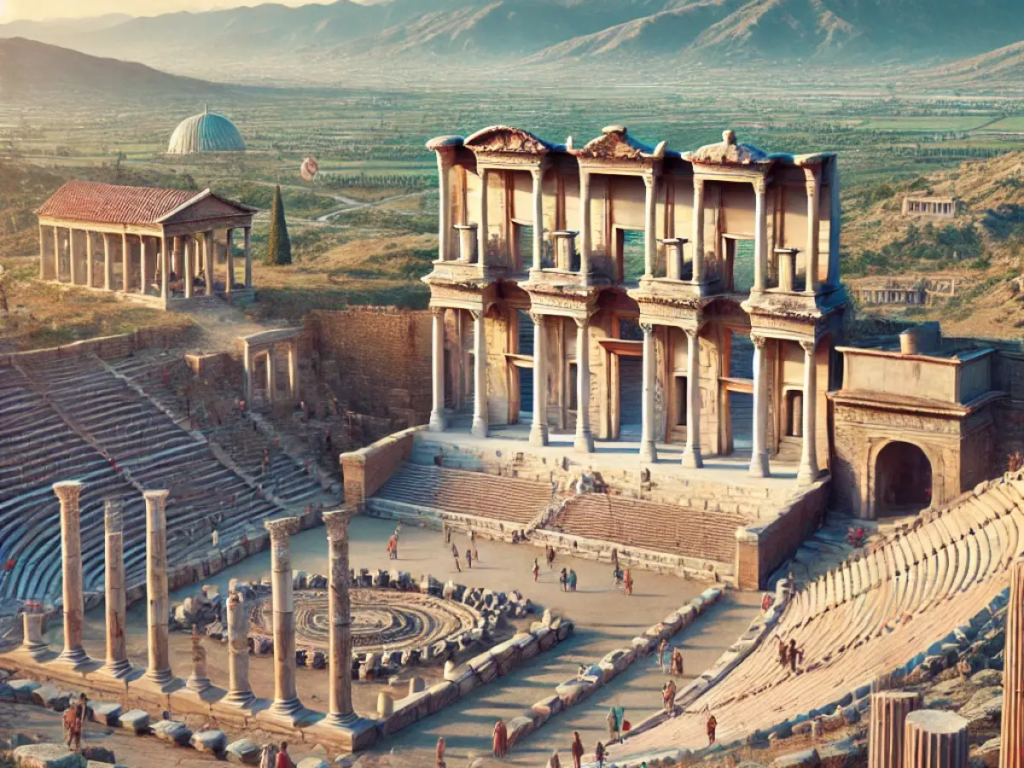Libraries have long been the guardians of human knowledge, preserving centuries of wisdom, literature, and culture. However, not all of these treasures have survived the test of time. Throughout history, some of the world’s greatest libraries were destroyed, taking with them priceless collections of books and manuscripts. Despite their absence today, these lost libraries remain symbols of intellectual achievement and human curiosity. Here are seven legendary libraries that once shaped the world.
1. Library of Alexandria – Alexandria, Egypt

The Library of Alexandria is perhaps the most famous lost library in history. Built in the 3rd century BCE, it was intended to house every book and manuscript in existence. With an estimated collection of hundreds of thousands of scrolls, it was the intellectual hub of the ancient world. Scholars like Euclid, the father of geometry, and Eratosthenes, who calculated Earth’s circumference, are closely associated with this legendary library.
Why Was It Lost?
The library’s destruction remains shrouded in mystery, with various accounts blaming fires, wars, and political upheaval. Regardless of the cause, its loss symbolizes one of the greatest tragedies in the preservation of human knowledge.
2. House of Wisdom (Bayt al-Hikmah) – Baghdad, Iraq

The House of Wisdom, established in the 8th century CE by the Abbasid Caliphate, was a beacon of scientific and philosophical thought during the Islamic Golden Age. Located in Baghdad, it became a melting pot of scholars translating works from Greek, Persian, and Indian origins into Arabic. Renowned scientists such as Al-Khwarizmi, the father of algebra, and Al-Haytham, a pioneer in optics, conducted groundbreaking research here.
Why Was It Lost?
In 1258, the Mongols invaded Baghdad, destroying the city and its treasured library. It is said that the Tigris River turned black from the ink of thousands of manuscripts thrown into its waters.
3. Library of Pergamon – Pergamon (Modern-day Bergama), Turkey

The Library of Pergamon, built in the 2nd century BCE, rivaled the Library of Alexandria in both size and prestige. It housed an impressive collection of 200,000 scrolls and became famous for the development of parchment, which was used when papyrus supplies were limited. The library attracted scholars such as Galen, a prominent physician whose works influenced medicine for centuries.
Why Was It Lost?
Legend has it that much of the library’s collection was gifted to Cleopatra by Mark Antony, where it became part of the Library of Alexandria. The remaining portions of the Pergamon Library were eventually lost over time.
4. Library of Celsus – Ephesus, Turkey

Constructed in the 2nd century CE, the Library of Celsus in Ephesus was both a repository of knowledge and a monumental tomb for Tiberius Julius Celsus. It once held approximately 12,000 scrolls, stored in special niches to protect them from humidity. This library was built to honor Tiberius Julius Celsus, a Roman governor known for his contributions to education and culture.
Why Was It Lost?
Earthquakes and centuries of neglect led to the library’s decline. Today, only its reconstructed façade stands, serving as a testament to its former grandeur.
5. The Great Library of Constantinople – Istanbul, Turkey

Great Library of Constantinople
The Great Library of Constantinople, established in the 4th century CE, was a treasure trove of ancient Greek and Roman knowledge. It contained religious texts, historical documents, and works of classical literature. Figures like Photius, a Byzantine scholar and patriarch, and Michael Psellos, a philosopher, used this library to preserve and expand knowledge in their time.
Why Was It Lost?
During the Fourth Crusade in 1204, the library was plundered and destroyed when European forces sacked Constantinople. Much of its collection was lost forever.
6. Nalanda Library – Bihar, India

The Nalanda Library, part of the renowned Nalanda University, was one of the greatest centers of learning in ancient India. Established in the 5th century CE, its library housed thousands of manuscripts on subjects like philosophy, astronomy, and medicine. It was visited by Xuanzang, a Chinese Buddhist scholar, who translated and brought many of its texts to China.
Why Was It Lost?
Nalanda was attacked in the 12th century by invaders who burned its vast collection of manuscripts. The fire reportedly lasted for months, marking the end of a golden era of knowledge in India.
7. The Serapeum of Alexandria – Alexandria, Egypt

The Serapeum of Alexandria was a temple-library dedicated to the Greco-Egyptian god Serapis. It was an extension of the Library of Alexandria and housed many scrolls and manuscripts that contributed to the ancient world’s intellectual heritage. Famous philosopher Hypatia, one of the earliest female scientists, is said to have taught and studied here.
Why Was It Lost?
In the 4th century CE, the Serapeum was destroyed during conflicts between Christians and pagans, erasing yet another invaluable piece of Alexandria’s legacy.
These lost libraries remind us of the fragility of knowledge and the importance of preserving it for future generations. Each of these libraries played a crucial role in advancing human thought, shaping science, philosophy, and literature. They also nurtured some of the greatest minds in history, such as Euclid, Al-Khwarizmi, and Hypatia, whose legacies continue to influence us today.
As we celebrate the libraries we have today, let us remember these lost treasures as symbols of humanity’s eternal quest for knowledge.


